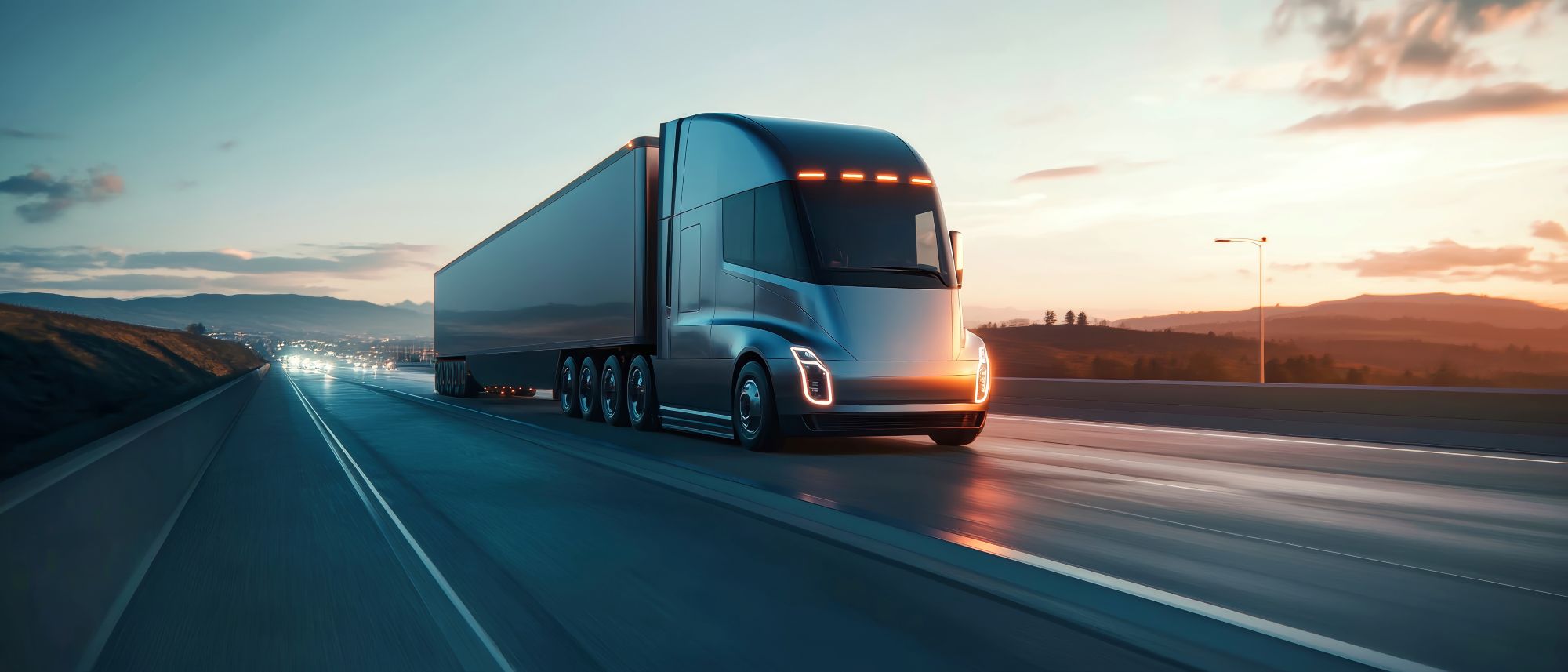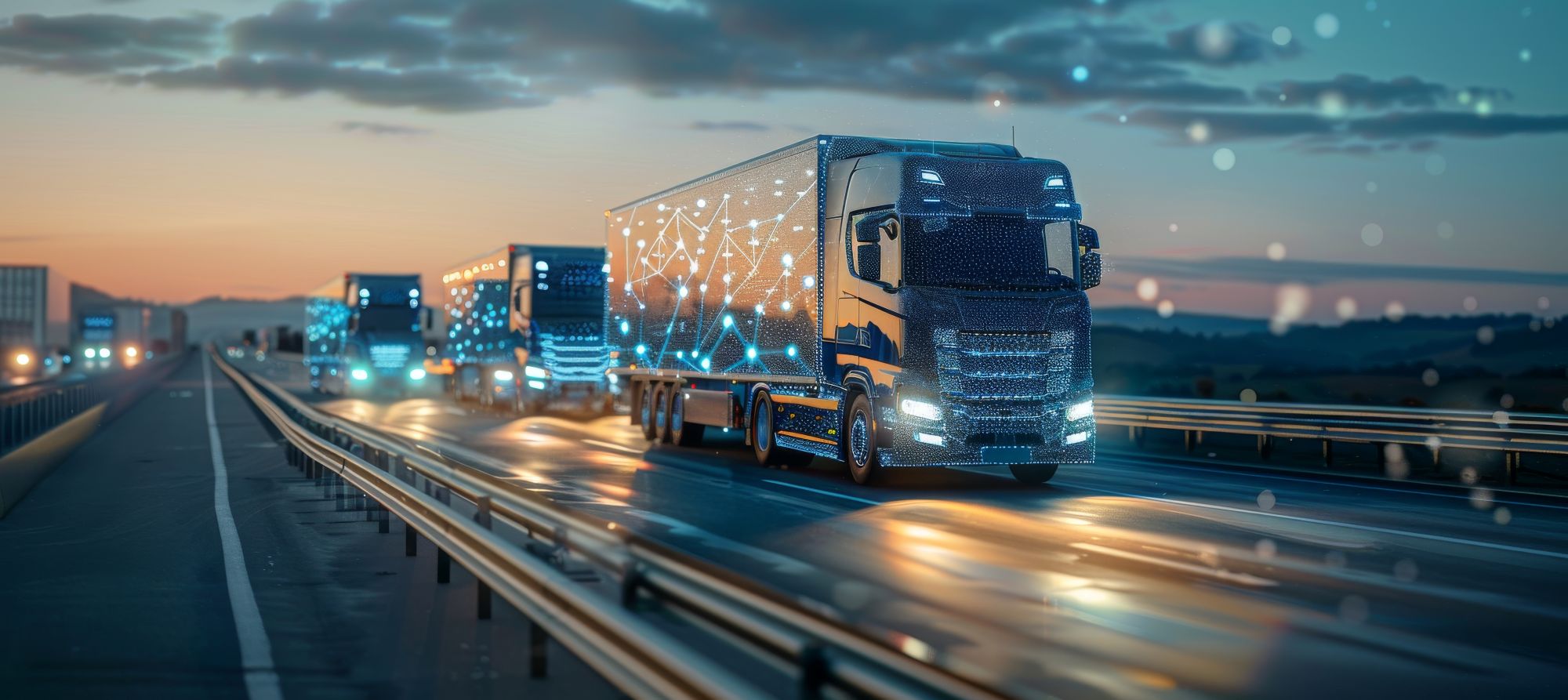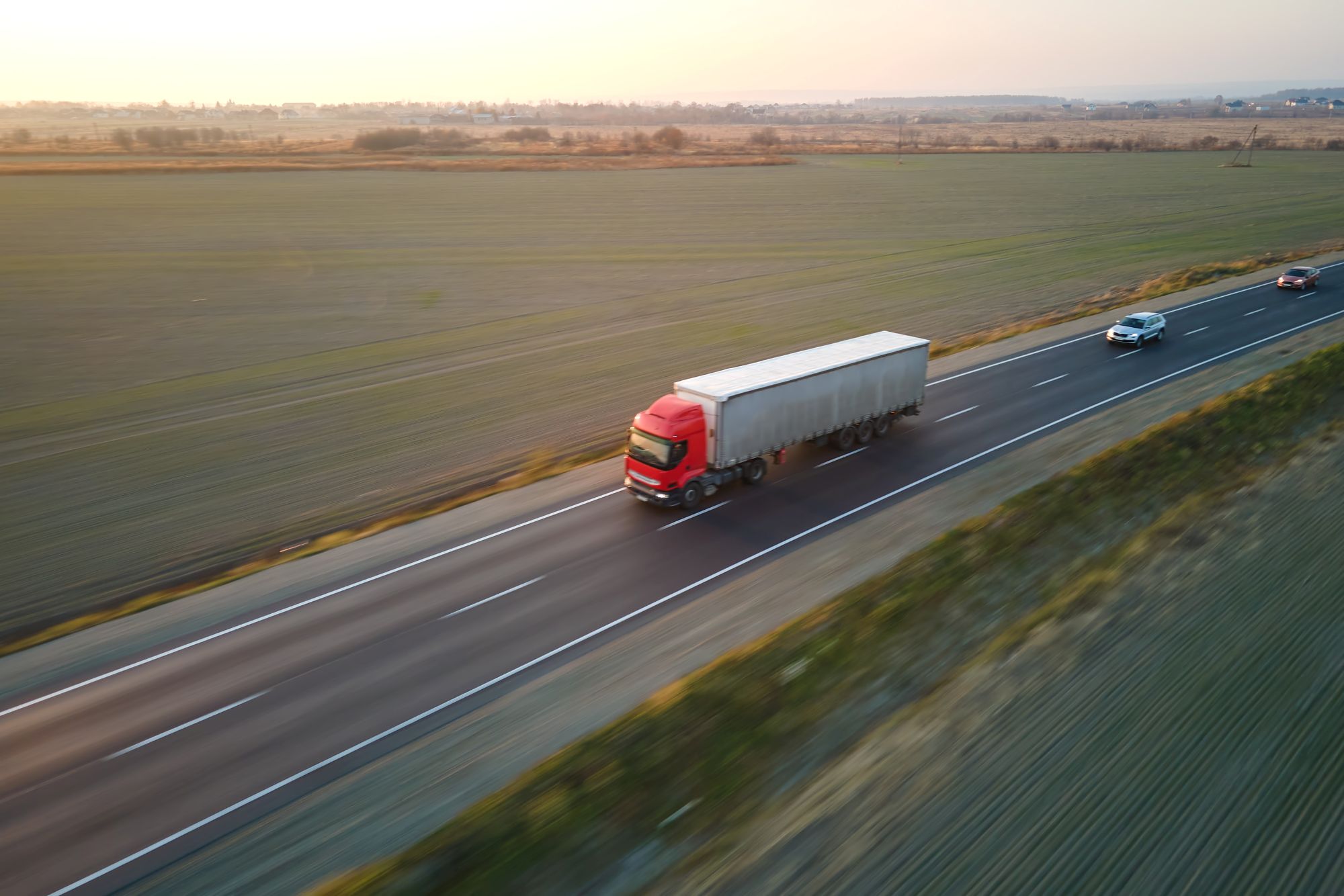
Guest
Ar automobilių parkai pereina prie autonominių transporto priemonių integracijos?
Sukurta: 28-08-2025
•
Atnaujinta: 28-08-2025
Šurmulys dėl savaeigių automobilių nėra toks garsus kaip anksčiau, tačiau jis ir toliau nuolat skamba automobilių parkų vadovų ausyse. Jungtinės Karalystės vyriausybė perkėlė autonominių automobilių integracijos bandomuosius planus į 2026 m., taip atnaujindama susidomėjimą šia technologija. Ar sprendimų priėmėjai ignoruos triukšmą, ar skatins ankstyvą diegimą?
Ką reiškia autonominių transporto priemonių integracija?
Autonominių transporto priemonių integracija apima savaeigių technologijų, tokių kaip dirbtinis intelektas, šviesos aptikimo ir nuotolio nustatymo (LiDAR) ir didelės raiškos kameros, diegimą į komercinius transporto priemonių parkus. Platesniu mastu tai reiškia, kad savaeigiai automobiliai įtraukiami į esamas viešojo transporto sistemas.
Pagalbinės vairuotojo sistemos apima susidūrimo išvengimo, automatinio greičio reguliavimo, eismo juostos nustatymo, adaptyviosios kruizo kontrolės ir išmaniosios važiavimo sistemos. Dalinė ir sąlyginė automatika naudoja pažangesnes technologijas, kad tam tikromis aplinkybėmis būtų galima vairuoti be rankų įrangos.
4 ir 5 lygio automatizavimas yra svarbiausi automobilių gamintojų prioritetai, tačiau juos sunku įgyvendinti praktiškai, nes inžinieriai turi atsižvelgti į daugybę kraštutinių atvejų. Net ir naudojant pažangų dirbtinį intelektą, gali būti sudėtinga tobulai pastatyti automobilį ir išvengti susidūrimų. Ką daryti, jei šaligatvio ženklinimas vos matomas arba į kelią išbėga vaikas? Priėmimas priklauso nuo automobilio reakcijos.
Ar automobilių parkai pereina prie autonominių transporto priemonių integravimo?
Pasak Susietų ir autonominių transporto priemonių centro, transporto sekretorė Heidi Alexander patvirtino, kad Jungtinės Karalystės vyriausybė paspartins komercinius bandomuosius savaeigių transporto priemonių planus ir sieks juos įgyvendinti 2026 m. pavasarį. Šis žingsnis galėtų sukurti beveik 40 000 darbo vietų ir iki 2035 m. JK ekonomiką papildyti 42 mlrd. svarų sterlingų.
Naujieji šalies automatizuotų transporto priemonių teisės aktai yra vieni iš griežčiausių pasaulyje ir sudaro prielaidas plačiam komerciniam pritaikymui. Vienintelė likusi kliūtis - technologinė branda.
Vokietijos automobilių technologijų bendrovės MOIA generalinis direktorius Sascha Meyer, duodamas interviu bendrovei "McKinsey & Company", teigė, kad prognozuoti autonominių transporto priemonių integravimo terminus yra sudėtinga. 2016 m. jos įmonė MOIA manė, kad bepiločių transporto priemonių paplis visoje Europoje iki 2021 m.
Nuo to laiko Mejeris suprato, kad priėmimas reiškia visos ekosistemos kūrimą, o ne tik vairavimo funkcijas. Pagal naująjį tvarkaraštį savaeigiai automobiliai Europos miestuose turėtų atsirasti ne anksčiau kaip 2030 m. MOIA inžinieriai projektuoja prototipą taip, kad jis viršytų privalomus atleidimus. Taip jie bus pasirengę komercinei veiklai, kai tik bus priimti atitinkami teisės aktai.
Veiksniai, lemiantys bepiločių transporto priemonių diegimą
Pristatymo, taksi, komunalinių ir komercinių transporto priemonių parkai vis dažniau naudoja vairuotojo pagalbos sistemas ir pažangią automatiką. Tačiau skverbties lygis išlieka palyginti žemas, ypač atsižvelgiant į tai, kaip seniai egzistuoja ši technologija. Kokie jų planai dėl autonomijos?
Efektyvumo didinimas yra viena iš pagrindinių priežasčių, kodėl automobilių parkų valdytojai imasi automatizavimo. Kitaip nei žmonės, mikroautobusai be vairuotojų gali dirbti visą parą. Naudodamiesi telematikos sistemomis, jie gali optimizuoti vairavimą ir sumažinti prastovos laiką, kad efektyviau naudotų degalus ir pagreitintų keliones.
Dirbtinis intelektas yra atsparus žmogaus klaidoms, todėl galima išvengti staigaus stabdymo ir išsiblaškymo vairuojant. Jis negali pavargti ir neturi aklųjų zonų. Šie patobulinimai gali padėti sumažinti susidūrimų keliuose ir automobilių avarijų skaičių, o tai gali sumažinti brangiai kainuojančias darbuotojų kompensacijas ir potencialiai sumažinti draudimo išlaidas.
Kitas veiksnys - išlaidų taupymas. 4 ir 5 lygiu savininkai gali optimizuoti darbo sąnaudas ir kompensuoti vairuotojų trūkumą. Be to, elektra varomi automobiliai be vairuotojo, turintys transporto priemonės prijungimo prie tinklo pajėgumus, per 30 metų gali sumažinti eksploatacines išlaidas beveik 20 %, o tai padeda kompensuoti pradines investicijas.

Veiksniai, dėl kurių vėluojama priimti bepilotes transporto priemones
Be to, kad laukia, kol bepiločių transporto priemonių technologija subręs, transporto priemonių parkų savininkai delsia ją priimti dėl didelių pradinių išlaidų. LiDAR, dirbtinio intelekto ir telematikos diegimas kiekviename sunkvežimyje yra brangus. Taip pat brangiai kainuoja ir naujų, o ne modifikuotų transporto priemonių pirkimas. Net jei pavyktų sutaupyti, technologijos sparčiai tobulėja - jų investicijos gali greitai pasenti.
Kitas rūpestis - saugumas. Daugumoje šiuolaikinių garažo vartų https://www.qualitydoorcompany.com/blog/garage-door-maintenance-guide/ yra standartiniai fotoelementų jutikliai. Jie neleidžia durims užsidaryti ant objektų, automobilių ar žmonių ir yra naudojami visoje pramonėje, automobilių plovyklose ir automobilių surinkimo linijose. Nors kai kurie automobilių gamintojai naudoja tik kamerų sistemas, inžinieriams teko ieškoti naujų sprendimų. Šiandien daugelis jų naudoja LiDAR, pasaulines palydovinės navigacijos sistemas ir ultragarsinius jutiklius.
Tačiau net ir pačios pažangiausios sistemos klysta. Nepakanka, kad automatizuoti automobiliai veiktų taip pat gerai kaip žmonės - jie turi būti sėkmingi ten, kur žmonės vairuotojai patiria nesėkmę.
Jutikliai egzistuoja jau daugelį metų, tačiau inžinieriai dar nėra jų ištobulinę. Jie gali nesuveikti kraštutiniais atvejais arba nežinomais scenarijais. 3 lygio automobiliai veikia tik iš anksto parengtuose žemėlapiuose, suskirstytuose greitkeliuose, esant geram orui. Atsižvelgiant į tai, kad 2021 m. Jungtinėje Karalystėje buvo 150 dienų su krituliais, jie gali būti per daug nepatikimi, kad būtų pritaikyti plačiu mastu.
Kaip JK gali pasirengti autonominėms transporto priemonėms
Autonominių transporto priemonių integracija gali vykti lėtai, tačiau ji yra pakeliui į tikslą, kurį pasieks per ateinantį dešimtmetį. Remiantis "Goldman Sachs" tyrimais, iki 2030 m. iki 10 % pasaulyje parduodamų naujų automobilių gali būti 3 lygio transporto priemonės. Prognozuojama, kad 2 lygio transporto priemonių, t. y. tokių, kurioms reikalinga vairuotojo priežiūra, pardavimai padidės nuo 20 proc. 2025 m. iki 30 proc. 2027 m.
Vadovai turėtų apsvarstyti autonominio parko integravimo apimtį ir sąnaudas, kad nustatytų, ar ankstyvas diegimas jiems tinka. Tikėtina, kad tai leis sutaupyti lėšų ilguoju laikotarpiu, tačiau laukti gali būti naudingiau, nes tai suteikia laiko technologinei pažangai. Jei sąnaudų ir naudos analizė neįtikina, jie turėtų apsvarstyti galimybę palaipsniui atnaujinti automobilius, kai jie sugenda.
Tie, kurie imasi diegimo, turi parengti eksploatavimo, saugojimo, saugumo ir atnaujinimo politiką. Šios taisyklės turėtų skirtis priklausomai nuo automatizavimo lygio. Pavyzdžiui, iš 3 lygio sunkvežimių vairuotojų turėtų būti reikalaujama, kad jie visą dėmesį skirtų keliui, kad prireikus galėtų perimti valdymą.
Sėkmingam įgyvendinimui labai svarbu šviesti darbuotojus apie jų vaidmenį. "Volkswagen Financial Services" atliktas tyrimas parodė, kad šeši iš dešimties žmonių mano, kad jie yra geresni vairuotojai nei autonominės transporto priemonės, todėl mažai tikėtina, kad jie pervertins bepilotės sistemos galimybes. Tačiau jie vis tiek turėtų būti aiškiai apmokyti apie geriausią praktiką ir įpročius, kurių reikėtų vengti.
Autonominių transporto priemonių parko integravimo ateitis Jungtinėje Karalystėje
Savavaldės mašinos sunkiai dirba uostuose ir sandėliuose visoje Europoje. Automatizuoti greitkelių transporto priemones sudėtingiau, nes jos nevažiuoja fiksuotais keliais. Be to, jos turi atsižvelgti į tokius kintamuosius kaip oro sąlygos ir kiti vairuotojai. Geofencingas, telematika ir dirbtinis intelektas spartina diegimą, nes nenuspėjamus dalykus paverčia nuspėjamais. Šie sprendimai bent jau pagerina reagavimo laiką ir sumažina žmogiškąsias klaidas, parodydami, kad šios anksčiau nepatikrintos technologijos yra tokios pat pajėgios kaip ir žmonės vairuotojai.
Kol kas visiškas automatizavimas, kai nebereikia žmogaus dėmesio, yra tik teorinė galimybė. Tačiau laisvų rankų įranga jau tapo realybe, o bepilotės sistemos netrukus gali tapti standartine komercinių automobilių parkų įranga. Automobilių gamintojams tobulinant vairavimo funkcijas, automobilių parkų savininkai turėtų teikti pirmenybę maršrutų žemėlapių sudarymui, vairuotojų valdymui ir techninės priežiūros planavimui.

Sužinokite daugiau iš [Renovated Magazine] (https://renovated.com/).



